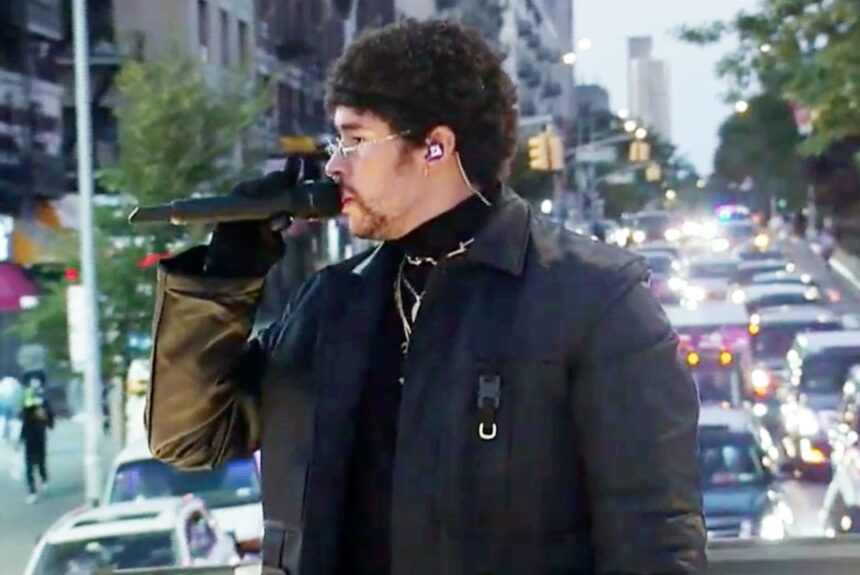The name of Benito Antonio Martínez Ocasio, better known as Bad Bunny, came up this Tuesday at the academic sessions of the X Congreso de la Lengua Española in Arequipa as the Hispanic “who has most defended Spanish in 2025 in the entire United States”.
Luis Fernández, a Spanish journalist and executive, currently president of Telemundo, defined him as “one of the greatest and best defenders that we Latinos who speak Spanish in the United States have”, in a panel that analyzed the present and future of this language in the United States.
Fernández referred to the Puerto Rican singer’s recent appearance on Saturday Night Live and the message he sent, challenging the audience to learn Spanish, in relation to his performance at halftime of the 2026 Super Bowl, the biggest sporting event in the United States.
The same panel, presented by Nuria Morgado of the North American Academy of the Spanish Language, included Francisco Javier Pueyo, current executive director of the Observatory of the Spanish Language at the Instituto Cervantes at Harvard, and scholar Richard Bueno Hudson.
All of them agreed in stressing that Spanish in the United States is “much more than a language of immigration”, since it was spoken long before the formation and expansion of the country to its current borders, and in its diversity, with varieties by country of origin, hybrid phenomena such as ‘Spanglish’ and bilingualism with indigenous languages.
Bad Bunny’s prominent role in the Spanish language

Morgado has highlighted its economic and cultural weight. “Hispanic has become mainstream, improving prestige and incentives to learn it even among non-Hispanics.”
Pueyo presented data on the table, such as the fact that more than 58 million people speak Spanish in the United States, more than 17% of the total population. Of these, 43 million speak it fluently at home and 15 million speak it in a more limited way.
Regarding its demographic evolution, the researcher pointed out that in fifty years the Hispanic population has multiplied sevenfold and is expected to double by 2060 to 128 million people, which would represent around 25% of the population.
On the other side of the scale, he pointed to the “intensification of political and media pressure” on the Hispanic population since January 2025 (with the return of Donald Trump to power) and warned of the real consequences for health or legal security of decisions that may seem “merely symbolic” such as the disappearance of Spanish from institutional platforms.
In that sense, Pueyo has considered their situation to be “of extreme vulnerability” and mentioned other measures of the Trump administration such as the revocation of asylum, attempts to limit access to U.S. citizenship or mass deportations.
“U.S. Spanish has a history and dynamics that have favored its growth in the past; we will have to be attentive to whether the current antagonistic policies are temporary or perpetuated over time,” said the representative of the Cervantes Institute at Harvard.
The speakers also agreed that another of the main challenges facing Spanish in the United States is the intergenerational loss of the language. The keys to preventing this decline, according to Pueyo, lie in the reinstatement of bilingual education, currently in expansion.
Luis Fernández once again used Bad Bunny and his song ‘Debí tirar más fotos’ (I should have taken more photos) to conclude his speech. “May we not have to say in twenty or thirty years, ‘I should have defended Spanish more in the United States,'” reported Agencia EFE.
Find out more at ‘QueOnnda.com’.






















